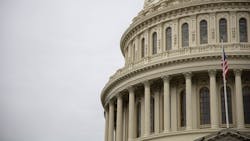This morning, the U.S. House of Representatives successfully passed the Build Back Better Act, which could provide $1.75 trillion for further infrastructure support. The bill will now have to make its way through a highly-contested Senate, where it will likely face opposition and heavy revision.
Although the main appeal of the legislation lies in its support for “human infrastructure”, it also includes significant funding for drinking water, wastewater and stormwater infrastructure, alongside support for climate resiliency, nationwide. This could further develop the nation's water infrastructure beyond the funding already provided by the $1 trillion infrastructure bill.
LEARN MORE:
A WaterWorld webinar, Dec 17, 2021, 1 pm EST.
Register here.
Among support for water infrastructure, the bill includes significant spending to further support lead remediation, water reclamation, and water supply projects in Western states. The bill could also provide $2 billion in federal funding for sewer overflow controls, stormwater management and water recycling, and provide $225 million for the Environmental Protection Agency to support low-income water customers.
“Clean water utilities provide essential services that protect the environment and keep local communities healthy and resilient,” said National Clean Water Agency (NACWA) CEO Adam Krantz. “NACWA applauds Congress for including these clean water investments in this package and looks forward to continued collaboration as this bill heads to the Senate for consideration.”
A significant aspect of the bill is its stance toward climate resiliency and greenhouse gas reductions: as it stands, the legislation could provide over $555 billion in clean energy and climate investments, which includes major clean energy tax credits and rewards for companies sourcing their materials from cleaner fabricators.
The organization Circle of Blue released a breakdown of the spending that may come from the bill:
- $9 billion for disadvantaged communities to remove lead from drinking water.
- $970 million for replacing lead service lines in rural communities.
- $225 million to assist low-income households with water bills.
- $550 million for the Bureau of Reclamation to construct drinking water projects.
- $100 million for water reuse grants.
- $500 million to the EPA for stormwater reuse and sewer overflow grants.
- $150 million for replacing or installing septic systems nationwide.
- $1.8 billion to the Rural Housing Service for grants and loans to improve home water and energy efficiency, bolster protections against flood and fire, and remove health hazards.



